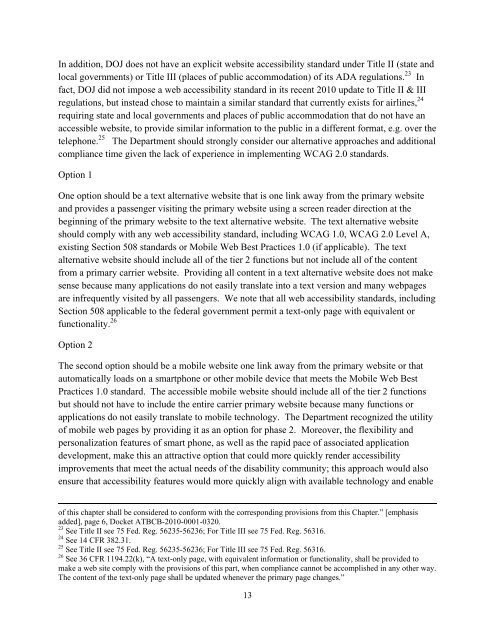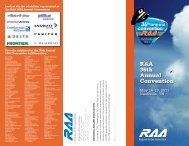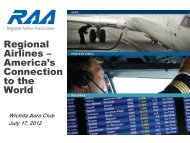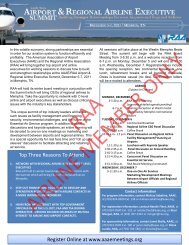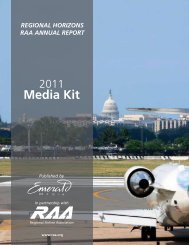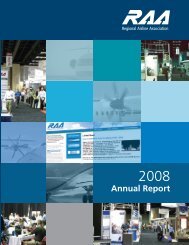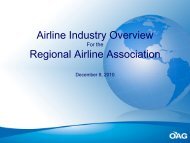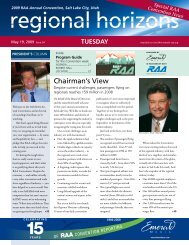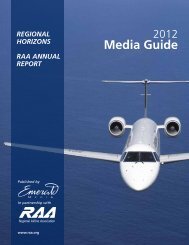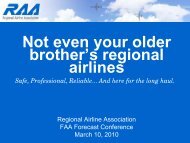Comments - Regional Airline Association
Comments - Regional Airline Association
Comments - Regional Airline Association
Create successful ePaper yourself
Turn your PDF publications into a flip-book with our unique Google optimized e-Paper software.
In addition, DOJ does not have an explicit website accessibility standard under Title II (state andlocal governments) or Title III (places of public accommodation) of its ADA regulations. 23 Infact, DOJ did not impose a web accessibility standard in its recent 2010 update to Title II & IIIregulations, but instead chose to maintain a similar standard that currently exists for airlines, 24requiring state and local governments and places of public accommodation that do not have anaccessible website, to provide similar information to the public in a different format, e.g. over thetelephone. 25 The Department should strongly consider our alternative approaches and additionalcompliance time given the lack of experience in implementing WCAG 2.0 standards.Option 1One option should be a text alternative website that is one link away from the primary websiteand provides a passenger visiting the primary website using a screen reader direction at thebeginning of the primary website to the text alternative website. The text alternative websiteshould comply with any web accessibility standard, including WCAG 1.0, WCAG 2.0 Level A,existing Section 508 standards or Mobile Web Best Practices 1.0 (if applicable). The textalternative website should include all of the tier 2 functions but not include all of the contentfrom a primary carrier website. Providing all content in a text alternative website does not makesense because many applications do not easily translate into a text version and many webpagesare infrequently visited by all passengers. We note that all web accessibility standards, includingSection 508 applicable to the federal government permit a text-only page with equivalent orfunctionality. 26Option 2The second option should be a mobile website one link away from the primary website or thatautomatically loads on a smartphone or other mobile device that meets the Mobile Web BestPractices 1.0 standard. The accessible mobile website should include all of the tier 2 functionsbut should not have to include the entire carrier primary website because many functions orapplications do not easily translate to mobile technology. The Department recognized the utilityof mobile web pages by providing it as an option for phase 2. Moreover, the flexibility andpersonalization features of smart phone, as well as the rapid pace of associated applicationdevelopment, make this an attractive option that could more quickly render accessibilityimprovements that meet the actual needs of the disability community; this approach would alsoensure that accessibility features would more quickly align with available technology and enableof this chapter shall be considered to conform with the corresponding provisions from this Chapter.” [emphasisadded], page 6, Docket ATBCB-2010-0001-0320.23 See Title II see 75 Fed. Reg. 56235-56236; For Title III see 75 Fed. Reg. 56316.24 See 14 CFR 382.31.25 See Title II see 75 Fed. Reg. 56235-56236; For Title III see 75 Fed. Reg. 56316.26 See 36 CFR 1194.22(k), “A text-only page, with equivalent information or functionality, shall be provided tomake a web site comply with the provisions of this part, when compliance cannot be accomplished in any other way.The content of the text-only page shall be updated whenever the primary page changes.”13


